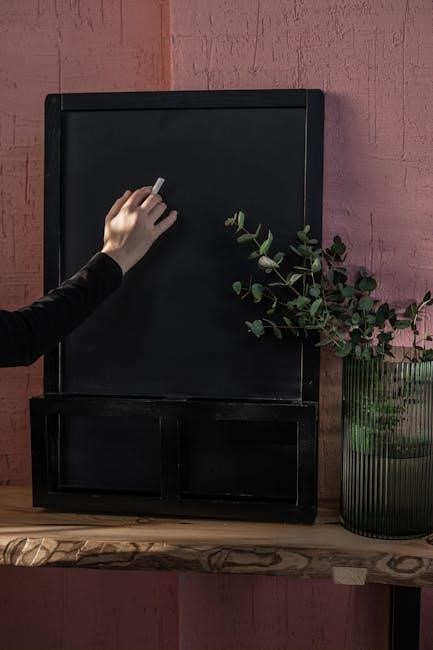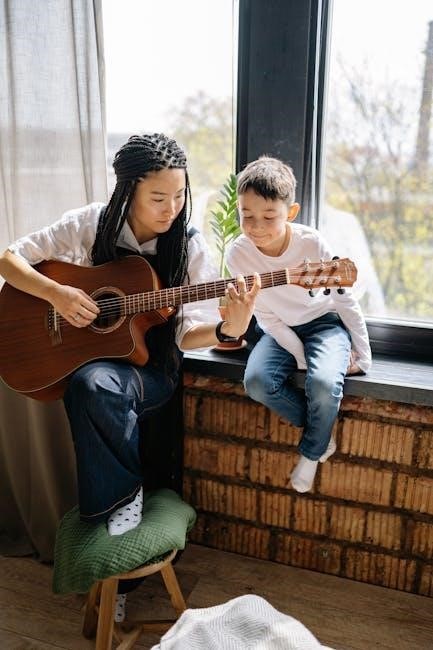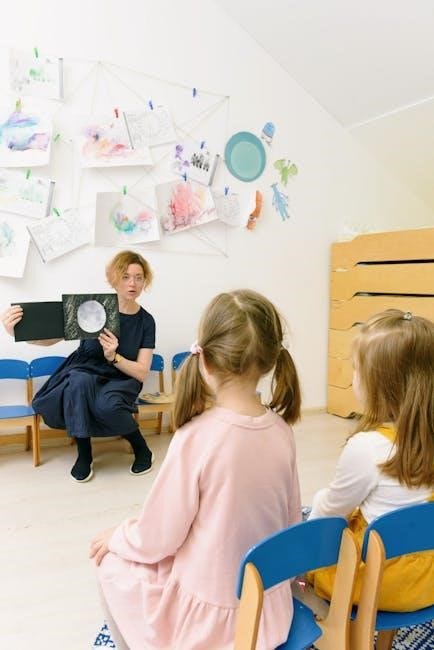Halloween demands hi-jinx‚ but manners rule the day! From costumes to candy requests‚ families should know the no-nonsense rules for Halloween fun. Discuss trick-or-treat etiquette with your little goblins‚ ghosts‚ and princesses before the big night.
The Importance of Manners on Halloween
Halloween is a fun holiday‚ but it’s easy to forget basic manners with so much sugar fueling excitement. Remembering essential trick-or-treat manners keeps the Halloween season friendly for children‚ parents‚ and neighbors. Teaching kids the importance of politeness ensures a treat for everyone involved.
Being mindful of neighbors is crucial; don’t arrive too early‚ or they might not be prepared. Conversely‚ don’t stay out too late. Remind your little goblin not to be greedy‚ one piece of candy from each house is the general rule. Teach children to look the hostess in the eye and say “Thank You” for their treat.
When offered a treat‚ take it graciously‚ never return it or ask for something else. Good manners during trick-or-treating ensure a joyful and spooky time for all‚ and make the experience pleasant for both the givers and receivers of treats.

Before Trick-or-Treating: Preparation is Key
Before taking your kids out‚ do a quick role-play of correct manners and sayings. Ensure costumes are safe for your child. Proper preparation ensures a safe‚ fun‚ and respectful trick-or-treating experience for everyone involved on Halloween night.
Role-Playing Good Manners
Before embarking on your Halloween adventure‚ a quick role-playing session can work wonders. Simulate approaching a neighbor’s door; have your child practice saying “Trick or treat” politely and “Thank you” graciously after receiving candy. This allows them to internalize the proper etiquette in a comfortable setting.
Role-playing also provides an opportunity to address potential scenarios‚ such as what to do if the candy bowl is empty or if someone offers a homemade treat. Discuss how to handle these situations with grace and understanding.
Furthermore‚ use role-playing to emphasize the importance of respecting personal property. Practice walking on pathways‚ avoiding flower beds‚ and refraining from excessive noise. By rehearsing good manners beforehand‚ you’ll equip your child with the skills and confidence to navigate trick-or-treating with politeness and consideration. This preparation fosters a positive experience for both trick-or-treaters and homeowners alike‚ contributing to a harmonious Halloween celebration.
Costume Safety and Visibility
Prioritize safety when selecting or creating costumes. Ensure costumes fit properly to prevent trips and falls. Avoid overly long gowns or capes that could cause accidents. Masks should allow for clear vision; consider using face paint instead if masks obstruct sight.

Enhance visibility‚ especially during dusk or nighttime trick-or-treating. Incorporate reflective tape or glow sticks into costumes. Carry a flashlight to illuminate the path and make your group more visible to drivers. Brightly colored costumes are easier to spot than dark ones.
Check costume materials for flame resistance to minimize fire hazards. Avoid costumes with sharp or protruding objects that could cause injury. Ensure any props‚ such as swords or wands‚ are soft and flexible. Remind children to be mindful of their surroundings and avoid bumping into others.
By addressing costume safety and visibility‚ you’ll create a secure and enjoyable trick-or-treating experience. A well-prepared costume not only looks fantastic but also contributes to a safer Halloween night for everyone.

During Trick-or-Treating: The Golden Rules
Be polite and respectful! Remember‚ it’s fun for everyone when good manners rule. Don’t be greedy; one treat is the general rule. Say “Thank You!” and be mindful of others‚ not too early‚ not too late.
Respecting the Lights On/Off Rule
One of the most important rules of trick-or-treating is to respect whether a house is participating or not. The universal signal for “We’re giving out treats!” is having the porch light on. If a house has its lights off‚ it means they are not participating‚ and you should skip that house.
It’s crucial to teach children to recognize and respect this signal. Traipsing across the lawn to a dark house is disrespectful. It’s better to move on and find a home that is welcoming trick-or-treaters.
Turning off lights is a clear message to trick-or-treaters to move on. If you see a dark house‚ teach your children to be understanding. They might be out for the night or simply not able to participate this year. Respecting this unspoken rule ensures a smoother‚ more enjoyable Halloween night for everyone involved.
Remember‚ being considerate of homeowners adds to the fun and festive atmosphere of Halloween. By following the lights on/off rule‚ you’re helping to maintain a positive trick-or-treating experience for all.
Approaching Homes Respectfully: Pathways and Property
When approaching a house for trick-or-treating‚ it’s essential to be mindful of the homeowner’s property. Stick to the designated pathways‚ such as sidewalks and driveways‚ to avoid trampling on lawns or flower beds. Avoid cutting across the grass‚ even if it seems like a shortcut.
Teach children to respect the boundaries of private property. Remind them that it’s impolite to wander into gardens or disturb decorations. Be mindful of any obstacles or potential hazards in the yard‚ such as hoses or uneven surfaces.
Encourage kids to walk‚ not run‚ up to the door. A calm and controlled approach shows respect for the homeowner and ensures safety‚ especially in the dark. Avoid making excessive noise or causing any disturbances that could bother the residents or their neighbors.
By following these simple guidelines‚ you can ensure that your trick-or-treating experience is respectful and considerate of others’ property. Remember‚ good manners make for a more enjoyable Halloween for everyone involved.
The Polite Request: “Trick or Treat” and “Thank You”
The cornerstone of trick-or-treating etiquette lies in the polite exchange between the treat-seeker and the treat-giver. It all starts with a clear and audible “Trick or Treat!” delivered with enthusiasm and a smile. This simple phrase is the traditional greeting and sets a positive tone for the interaction.
However‚ the politeness doesn’t end there. After receiving a treat‚ it’s crucial to express sincere gratitude. A genuine “Thank You” demonstrates appreciation for the homeowner’s generosity and reinforces good manners. Encourage children to make eye contact while saying “Thank You” to show sincerity.
Role-playing these interactions beforehand can help children feel more comfortable and confident. Practice different scenarios‚ such as receiving a favorite treat or a treat they don’t particularly like. Emphasize that regardless of the treat‚ expressing gratitude is always the right thing to do.
By mastering these simple phrases‚ trick-or-treaters can create positive experiences for themselves and those they encounter‚ making Halloween a delightful and respectful occasion for all.
Taking Only One Treat (Unless Offered More)

A fundamental aspect of trick-or-treating etiquette revolves around the concept of moderation and respect for the generosity of others. The general rule of thumb is to take only one treat from each house‚ unless explicitly offered more by the homeowner. This practice ensures that there are enough treats to go around for all the trick-or-treaters who visit.
It’s essential to teach children the importance of this rule and explain that taking more than one treat without permission is considered greedy and impolite. Emphasize that the act of giving treats is a kind gesture‚ and it’s crucial to appreciate the homeowner’s willingness to share.
If a homeowner offers more than one treat‚ it’s perfectly acceptable to accept their offer graciously. However‚ it’s still important to avoid being excessive and to consider the needs of other trick-or-treaters who may visit the same house later in the evening.
By adhering to this simple rule‚ trick-or-treaters can demonstrate respect‚ consideration‚ and good manners‚ contributing to a positive and enjoyable Halloween experience for everyone involved.
Avoiding Greediness
Halloween is an exciting time for children‚ but it’s easy to forget basic manners amidst the sugar-fueled excitement. Remind your little goblins not to be greedy. Taking only one piece of candy from each house is the general rule. Teach children to only take one treat unless offered otherwise. Taking more than one without permission is impolite.

Emphasize the importance of sharing and consideration for other trick-or-treaters. Explain that greediness can spoil the fun for everyone involved. If a homeowner offers more‚ accept graciously‚ but avoid excess. Consider others who may visit later.
Discuss how being mindful ensures enough treats for all. Reinforce that the spirit of Halloween is about community and generosity‚ not accumulating as much candy as possible. By practicing moderation‚ children learn valuable lessons about respect and consideration‚ contributing to a positive and enjoyable experience for all involved‚ fostering a spirit of sharing.
Being Mindful of Others: Not Too Early‚ Not Too Late
Be mindful of neighbors when heading out to trick-or-treat. Showing up too early is rude. You likely won’t find anyone prepared to hand out candy. Reconsider ringing doorbells at 3 p.m. Don’t stay out too late‚ either. Be respectful of residents’ time and routines. Observe community norms for trick-or-treating hours;
If participating‚ turn off lights to alert trick-or-treaters to move on. This signals that you’re no longer offering treats. Respect homeowners who may have other commitments.
Consider the impact of your actions on others. Early or late visits can disrupt dinner times or bedtime routines. Aim for the established trick-or-treating window‚ usually after dusk but before late evening. Encourage children to be aware of their surroundings and respectful of neighbors’ privacy. Mindful timing contributes to a pleasant experience for everyone in the neighborhood.

Safety First: Essential Guidelines
Always trick-or-treat with an adult; everything is always better in pairs. Remember these essential guidelines: use a flashlight‚ stay out of the road‚ and never go into anyone’s house. Safety is paramount on Halloween night.
Always Trick-or-Treat with an Adult
While your little one may want to venture out alone‚ everything is always better in pairs‚ especially during the Halloween season. Safe Kids Worldwide found that a concerning number of young children are permitted to trick-or-treat without adult supervision‚ highlighting the importance of this guideline.
Having an adult present ensures not only the child’s safety but also provides guidance on proper etiquette and decision-making throughout the evening. Adults can help navigate potentially unsafe situations‚ monitor candy consumption for allergies‚ and ensure that the group adheres to established trick-or-treating rules.
Furthermore‚ adults can serve as positive role models‚ demonstrating respectful behavior at each house and reinforcing the importance of saying “thank you.” Ultimately‚ trick-or-treating with an adult creates a safer‚ more enjoyable‚ and well-mannered experience for everyone involved.
Using a Flashlight and Staying Visible
As dusk settles and darkness envelops the neighborhood on Halloween night‚ visibility becomes paramount for trick-or-treaters. Equipping children with flashlights is an essential safety measure‚ illuminating their path and making them more visible to drivers and homeowners alike.
In addition to flashlights‚ consider incorporating reflective elements into costumes or carrying glow sticks to further enhance visibility. Brightly colored costumes can also help children stand out against the night sky. Remind children to stay on sidewalks or designated pathways whenever possible‚ avoiding walking in the road where they are more vulnerable to traffic.
By prioritizing visibility‚ you can significantly reduce the risk of accidents and ensure a safer trick-or-treating experience for your children and their fellow Halloween revelers. Being seen is a key component of staying safe.
Never Enter a Stranger’s Home
One of the most critical safety rules for trick-or-treating is to never enter a stranger’s home. No matter how inviting the decorations or how generous the offer of treats may seem‚ it is crucial to maintain a strict boundary and avoid going inside.
Emphasize to children that they should only approach houses with the porch light on and remain on the doorstep or sidewalk. If a homeowner invites them inside‚ politely decline and move on to the next house. This rule applies regardless of whether the homeowner is dressed in costume or appears friendly.
Reinforce the importance of this rule by explaining that you can never be too sure about someone’s intentions and that it’s always better to err on the side of caution. By adhering to this fundamental guideline‚ you can significantly reduce the risk of encountering dangerous situations and ensure a safer trick-or-treating experience.
Staying Out of the Road
When trick-or-treating‚ it’s extremely important to stay out of the road and adhere to traffic safety guidelines. Children‚ caught up in the excitement of the night‚ may forget basic safety rules‚ so it’s crucial for parents and guardians to emphasize this point. Always walk on sidewalks or designated pathways‚ and if there are none‚ walk on the edge of the road facing traffic.
Before crossing any street‚ stop and look both ways carefully. Make sure there are no approaching cars before stepping into the road. Avoid running across the street‚ as this can be dangerous and increase the risk of accidents. It’s also essential to teach children to watch for cars backing out of driveways.
By following these guidelines and staying out of the road‚ you can significantly reduce the risk of accidents and ensure a safe and enjoyable Halloween night for everyone.

Dealing with Special Situations
Halloween presents unique scenarios. Be prepared to handle food allergies with care. Also‚ be understanding and patient when interacting with shy or nonverbal children at the door. A little kindness goes a long way!
Handling Food Allergies
Halloween can be tricky for children with food allergies. Before heading out‚ discuss the importance of not eating any treats until they have been checked by a trusted adult. Teach children to politely decline treats that may contain allergens. Consider providing allergy-friendly options for trick-or-treaters visiting your home‚ such as non-food treats like stickers or small toys.
If your child has a severe allergy‚ consider having them wear a medical alert bracelet or carrying an epinephrine auto-injector. Always read labels carefully to identify potential allergens. Participate in the Teal Pumpkin Project by offering non-food treats and displaying a teal pumpkin to signal your home as allergy-friendly.
Remember‚ being mindful of food allergies ensures a safe and inclusive Halloween for everyone. Communication and preparation are key to preventing allergic reactions and keeping the focus on fun.
Interacting with Shy or Nonverbal Children
Halloween can be overwhelming for shy or nonverbal children. When encountering them‚ remember that not all children will enthusiastically shout “Trick or Treat!” or “Thank you.” Be patient and understanding if a child is hesitant to speak or make eye contact. A simple smile and offering a treat is often enough.
Avoid demanding verbal responses or pressuring them to engage more than they are comfortable with. Some children may communicate through gestures‚ signs‚ or by pointing. Be observant and responsive to their cues.
Consider having a bowl of treats readily available so children can take one without needing to interact directly. This can ease anxiety for those who struggle with social interactions. Remember‚ kindness and acceptance are the most important treats you can offer.

After Trick-or-Treating: Wrap-Up
The night ends‚ and pillowcases overflow. But before diving in‚ remember one crucial rule: No eating candy until home! Ensure a safe sorting and inspection process‚ making the end just as secure as the start.

No Eating Candy Until Home
The anticipation of unwrapping and devouring the Halloween haul is intense‚ but a crucial safety rule must be followed: no eating candy until home. This guideline isn’t just about delayed gratification; it’s a vital safety measure. In the excitement of trick-or-treating‚ it’s impossible to thoroughly inspect each treat received. Waiting until you are in a well-lit‚ controlled environment allows for careful examination of all candies.
Parents can then check for any signs of tampering‚ such as opened wrappers‚ unusual appearances‚ or anything that seems out of the ordinary. This precaution is especially important in today’s world‚ where ensuring the safety of our children is paramount. Furthermore‚ waiting until home allows for a more mindful and controlled consumption of sweets.
Instead of impulsively grabbing and eating candy on the go‚ children can learn to savor each treat and make informed choices about what they consume. This can also be a good opportunity to discuss healthy eating habits and moderation. So‚ remind your little goblins and ghouls: the sweet reward awaits‚ but only after a safe arrival home.
